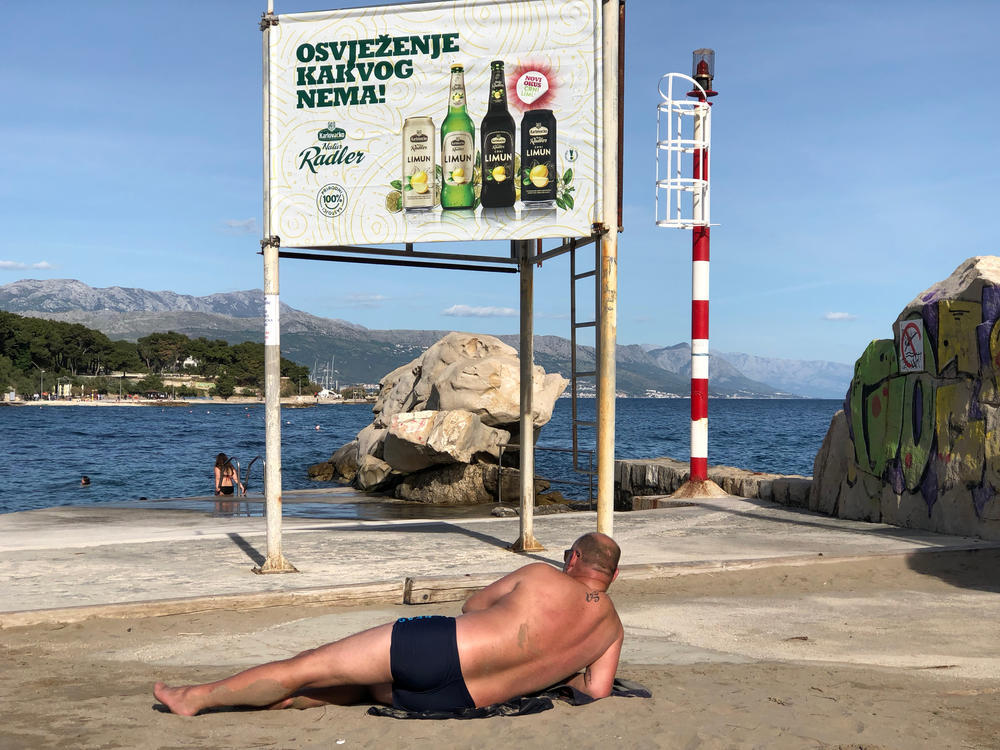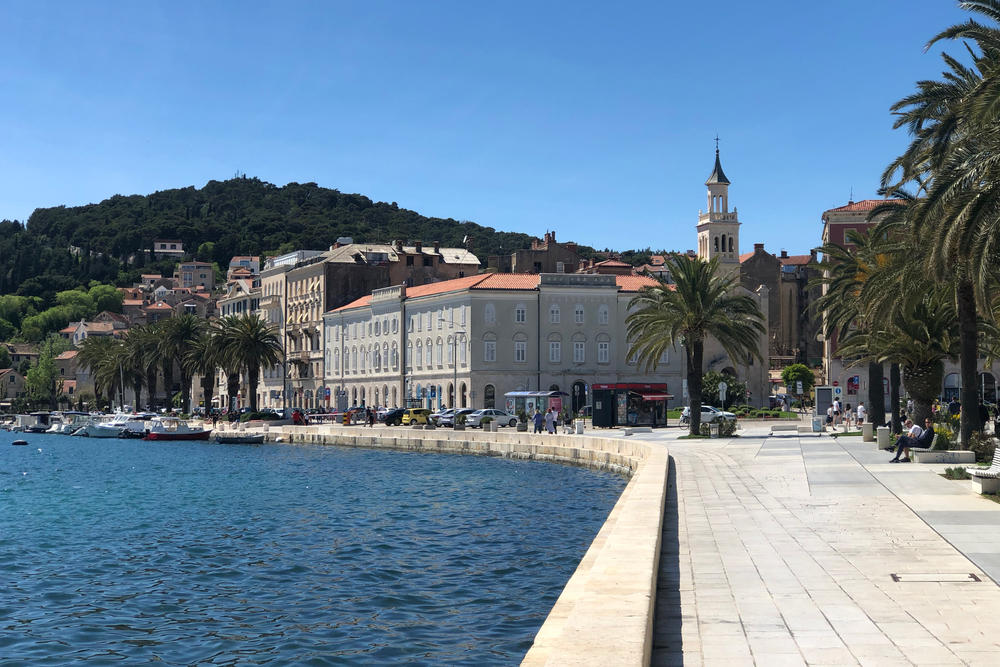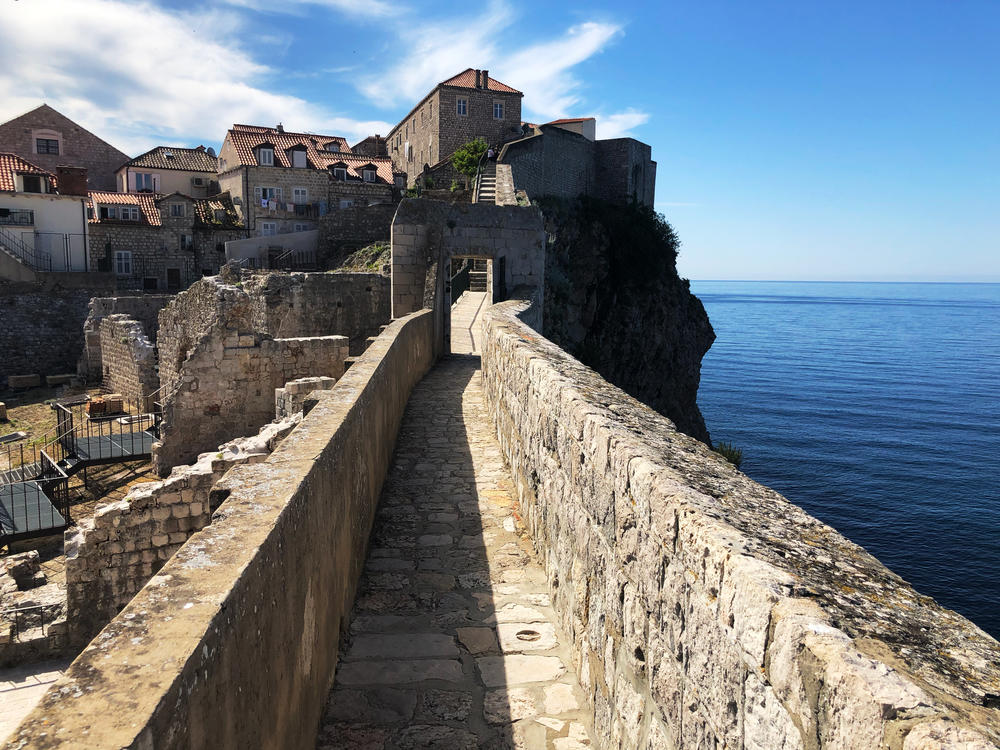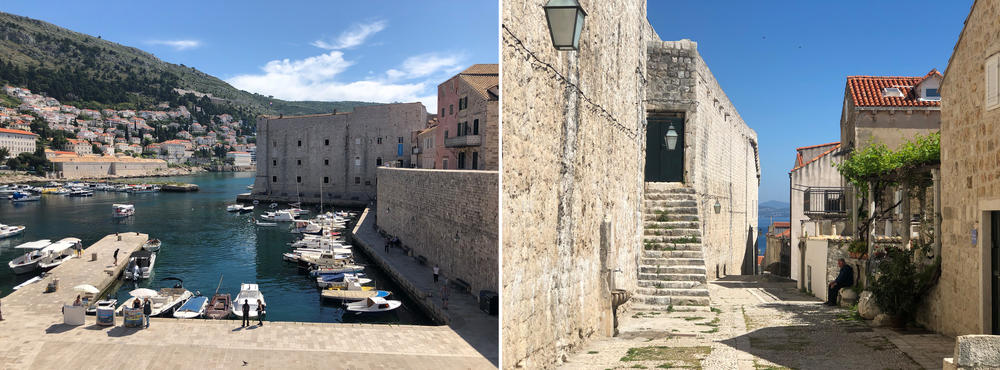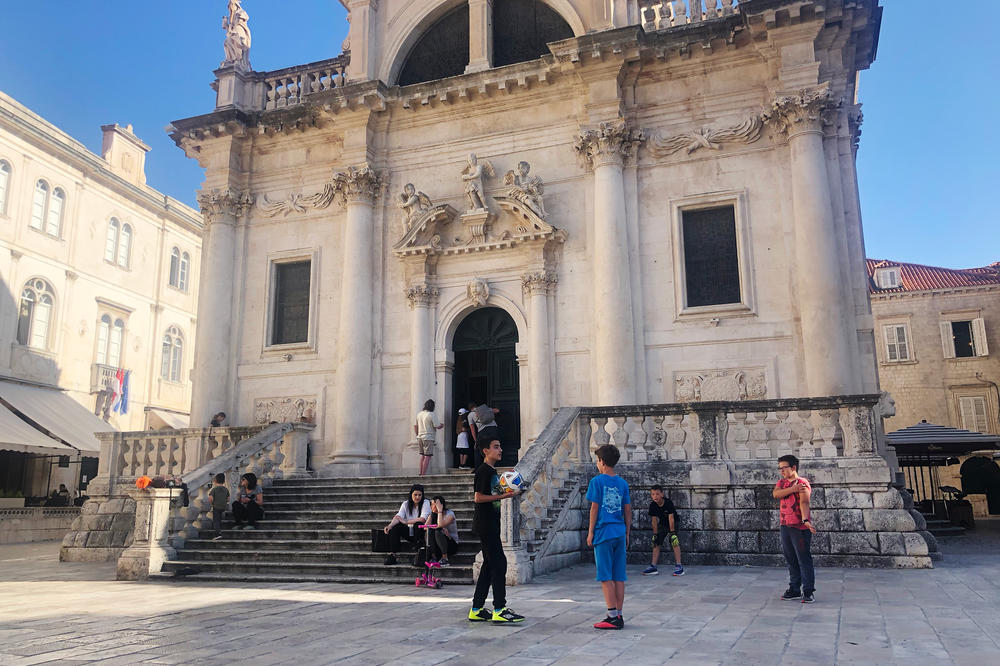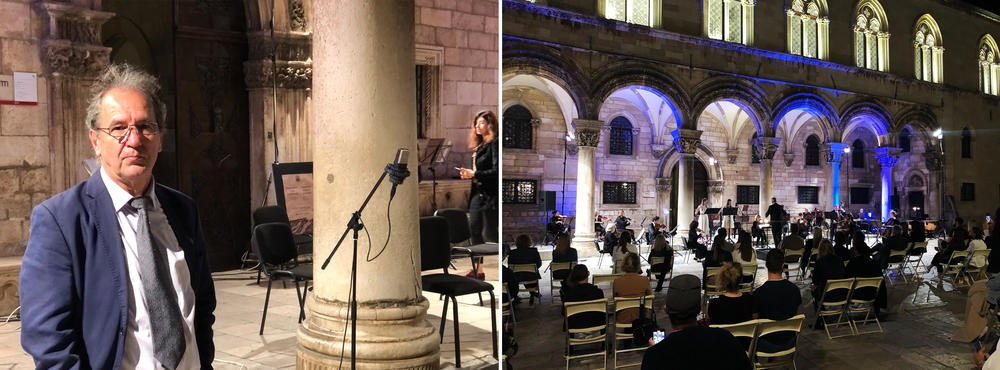Section Branding
Header Content
Croatia's Economy Needs Tourists. It's Now Opening The Doors To Vaccinated Americans
Primary Content
SPLIT AND DUBROVNIK, CROATIA — The Croatian immigration agent isn't impressed with my flimsy CDC-issued COVID-19 vaccination card. The paper, filled out in loopy strokes of blue cursive by a pharmacist at a Sam's Club in Houston more than a month earlier, looks easy to forge.
"Your second vaccination date hasn't even occurred yet," the immigration agent says, lifting an eyebrow and pointing to its date: 04-12-2021.
I explain that in the United States, we write the month first, then the day. "Oh!" she shouts with a giggle.
She shows the card to another agent. They snicker at how unprofessional this American vaccination card looks. Then she stamps my passport and welcomes me to Croatia.
The land of beaches and castles is one of the first European countries to open its borders to vaccinated Americans, bypassing the European Union as it mires itself in debate over the ethics and implications of "vaccination passports," still undecided on how to move forward. But for Croatia, the most tourism-dependent country in Europe, opening up quickly is crucial to reviving its pandemic-battered economy.
In the Adriatic coastal city of Split, among the catacombs below the 1,700-year-old palace built for the Roman emperor Diocletian, a soccer game is broadcast over a lonely transistor radio, one of the only signs of life. Before the pandemic, these catacombs were filled with thousands of tourists a day, but since the pandemic began, Yusuf Khan has sat here alone, surrounded by polished stone chalices, crucifixes and other souvenirs nobody's buying.
"I've lost 90% of my revenue for the past one year and three months," he says.
Khan, originally from Pakistan, has sold souvenirs at this stand for 20 years. Before the pandemic, he earned around $500 a day. "Now I make around $30," he says with a sad smile.
The Croatian government has helped him with monthly pandemic relief payments, but Split Tourist Board Director Josko Stella admits it's not enough. What's worse, he says, is that in the year leading up to the pandemic, Croatia hosted a record number of tourists.
"We were hoping for 2020 to be the best year of all years because we [would] have Americans coming back, we have the U.K. coming back, we have Chinese coming in, we have Koreans coming in," says an exasperated Stella. "I have been in [the] New York Times Square travel show for two years in a row! Everybody was crazy about Croatia and then, bomb!"
Split went from 18 million overnight stays to just 8 million in a single tourism season. Nationwide, it was far worse — an 86% hit on overnight stays between 2019 and 2020 for a country that usually depends on tourism for more than a fifth of its GDP. According to the National Tourism Board, Croatia had more than 400 million overnight stays in 2019. Last year, the number plummeted to 54 million.
Stella says opening the country to the vaccinated is a step in the right direction. He's crossing his fingers for this summer. "Because we can endure one year, we can do two half-years, but three, nobody can endure," he says. "It's crucial this summer, because people will lose hope if this summer they don't go on vacation."
The few tourists who have made it here, like Yuri Merkulov and Carina Kumina, honeymooners from Russia, enjoy empty beaches and vacant Roman ruins.
"It's [a] very, very good time to be here, actually," Merkulov says.
"Yes, you can take pictures of every place of interest you want and there won't be any people there and you can walk freely and you can see the locals," Kumina chimes in.
Local residents have had their hometowns to themselves for the first time in years. Hundreds of miles down the coast, inside the ancient walled city of Dubrovnik, life has returned to a quiet, pre-tourism existence. The narrow, winding alleys — typically filled with the din of thousands of tourists this time of year — are empty, filled instead with the sounds of a community: a child practicing the piano, a television left on, neighbors chatting.
The old city wall perched atop the rocky shores of the Adriatic — scenery that figured in the HBO series Game of Thrones, where it was portrayed as King's Landing — is usually a big draw. In the high season, the wall is so packed that it sometimes takes hours to enter.
On the day I visit, there are just a handful of tourists in my two-hour walk along the wall. When I'm ready to get off it, it's so empty that I need to find someone with keys to unlock a gate to let me back into the city.
"It's maybe 5% or 6% of the normal season," says the gatekeeper, as he searches in his pockets for the right key. "Two days ago on the wall, it was 200 tickets sold. In 2019, it was 5,000 a day."
After opening the gate, he peppers me with questions about how I was able to travel to Croatia, if I was vaccinated and whether I was scared about the mRNA vaccination altering my DNA permanently.
"The city has offered all of us employees the vaccination, but I'm not sure yet," he says.
Barista Petra Ercegovic, who works in Dubrovnik's old town, can't wait to get back to her real job on one of the several cruise ships that, before the pandemic, arrived daily to the city.
"In that glorious year of 2019, when the pandemic was not on our horizon, the city was overcrowded," she remembers. "The cruise ships were coming constantly every single day. The airport is very close by. Every seven minutes when one plane was taking off, and every 10 minutes one was landing."
The plaza where she spends her days serving the few who show up to drink coffee is typically filled with a dozen or more tour groups taking photos of the centuries-old church. Now it has returned to Dubrovnik's residents, including children playing a pickup soccer game against the wall of the 18th century Church of Saint Blaise.
Ercegovic grew up surrounded by tourists in the early 2000s, and she says that until the pandemic, she'd never seen local children play here before. She had only heard stories of it.
"I remember my father telling me and then my grandpa even showed me the old photos and in front of the old church with him playing with other kids," she says. "So it was really weird that after so many years, I can see kids here now. And it's kind of nostalgic and it's very nice to see them."
Now business is about to pick up. Spurred by Croatia's opening to Americans with vaccination cards, both United and Delta airlines are restarting direct flights from U.S. cities to Dubrovnik in July. Ercegovic's cruise ship line has called her to return to work in September.
In the meantime, Dubrovnik's residents are taking advantage of the empty city, including enjoying outdoor concerts underneath the stars. The Dubrovnik Symphony Orchestra has invited young musicians from the local high school to perform with them. They typically perform in the Rector's Palace, a 15th century Gothic structure known for its superb acoustics — but not in the era of social distancing, says symphony director Damil Milat.
"But outside, in front of the Rector's Palace, it's fresh air, so it's possible to be closer at one meter and a half, and also we are trying not to have a big audience," says Milat.
That isn't hard. The presence of very few tourists means the square in front of the palace is taken up by a few dozen well-dressed local parents, socially distanced, phones out, shooting video of their children performing with the orchestra.
As the musicians play, one of Dubrovnik's ubiquitous alley cats wanders underneath the French horn section, then the violins, before curling up around the leg of a cellist. Nobody in the audience seems to notice — the cats, after all, are local residents, too — and for the moment, everyone here has their ancient walled city all to themselves.
Copyright 2021 NPR. To see more, visit https://www.npr.org.

